Remote Sensing Image Enhancement Based on Non-Local Means Filter in NSCT Domain
Abstract
:1. Introduction
2. Theoretical Analysis
2.1. Nonsubsampled Contourlet Transform
2.2. Non-Local Means Filter
3. Implementation of the Proposed Method
3.1. Contrast Stretching in Low-Frequency Sub-Band
3.2. NLM Filter Denoising in High-Frequency Sub-Bands
3.3. Steps of the Proposed Method
- Step 1
- The original image is decomposed into one low-frequency sub-band and several high-frequency sub-bands by NSCT transform.
- Step 2
- The low-frequency sub-band coefficients are processed with contrast stretching according to equation 7, and the noise of the first high-frequency sub-band coefficients is suppressed by the NLM filter according to equations 3–6.
- Step 3
- The adjusted coefficients are reconstructed with inverse NSCT transform.
- Step 4
- The reconstructed image is enhanced by the unsharp filter.
4. Results and Discussions
4.1. Subjective Analysis
4.2. Objective Analysis
5. Conclusions
Acknowledgments
Author Contributions
Conflicts of Interest
References
- Rahman, S.; Rahman, M.M.; Abdullah-Al-Wadud, M. An adaptive gamma correction for image enhancement. Eurasip J. Image Video Process. 2016, 2016, 35. [Google Scholar] [CrossRef]
- Asmatullah, C.; Kim, J. Improved adaptive fuzzy punctual kriging filter for image restoration. Int. J. Innov. Comput. Inf. Control 2013, 9, 583–598. [Google Scholar]
- Cao, G.; Zhao, Y.; Ni, R.; Li, X. Contrast enhancement-based forensics in digital images. IEEE Trans. Inf. Forensics Secur. 2014, 9, 515–525. [Google Scholar] [CrossRef]
- Panagiotakis, C.; Kokinou, E.; Sarris, A. Curvilinear structure enhancement and detection in geophysical images. IEEE Trans. Geosci. Remote Sens. 2011, 49, 2040–2048. [Google Scholar] [CrossRef]
- Bedi, S.; Khandelwal, R. Various image enhancement techniques—A critical review. Int. J. Adv. Res. Comput. Commun. Eng. 2013, 2, 1605–1609. [Google Scholar]
- Gao, G.; Wan, X.; Yao, S. Reversible data hiding with contrast enhancement and tamper localization for medical images. Inf. Sci. 2017, 385, 250–265. [Google Scholar] [CrossRef]
- Babu, P.; Rajamani, V. Contrast enhancement using real coded genetic algorithm based modified histogram equalization for gray scale images. Int. J. Imaging Syst. Technol. 2015, 25, 24–32. [Google Scholar] [CrossRef]
- Lisani, J.; Michel, J.; Morel, J.M. An inquiry on contrast enhancement methods for satellite images. IEEE Trans. Geosci. Remote Sens. 2016, 54, 7044–7054. [Google Scholar] [CrossRef]
- Schmitt, A. Multiscale and multidirectional multilooking for SAR image enhancement. IEEE Trans. Geosci. Remote Sens. 2016, 54, 5117–5134. [Google Scholar] [CrossRef]
- Pu, X.; Jia, Z.; Wang, L. The remote sensing image enhancement based on nonsubsampled contourlet transform and unsharp masking. Concurr. Comput. Pract. Exp. 2014, 26, 742–747. [Google Scholar] [CrossRef]
- Chang, Y.T.; Wang, J.T.; Yang, W.H. A novel contrast enhancement technique on palm bone images. Algorithms 2014, 7, 444–455. [Google Scholar] [CrossRef]
- Yu, C.Y.; Lin, H.Y.; Lin, R.N. Eight-scale image contrast enhancement based on adaptive inverse hyperbolic tangent algorithm. Algorithms 2014, 7, 98–102. [Google Scholar] [CrossRef]
- Chen, S.; Ramli, A.R. Minimum mean brightness error bi-histogram equalization in contrast enhancement. IEEE Trans. Consum. Electron. 2003, 49, 1310–1319. [Google Scholar] [CrossRef]
- Wang, Y.; Chen, Q.; Zhang, B. Image enhancement based on equal area dualistic sub-image histogram equalization method. IEEE Trans. Consum. Electron. 1999, 45, 68–75. [Google Scholar] [CrossRef]
- Singh, K.; Rajiv, K. Image enhancement using exposure based sub image histogram equalization. Pattern Recognit. Lett. 2014, 36, 10–14. [Google Scholar] [CrossRef]
- Xiao, Z.; Zhang, X. Diabetic retinopathy retinal image enhancement based on gamma correction. J. Med. Imaging Health Inform. 2017, 7, 149–154. [Google Scholar] [CrossRef]
- Huang, S.; Cheng, F.C.; Chiu, Y.S. Efficient contrast enhancement using adaptive gamma correction with weighting distribution. IEEE Trans. Image Process. 2013, 22, 1032–1041. [Google Scholar] [CrossRef] [PubMed]
- Kaur, A.; Singh, C. Contrast enhancement for cephalometric images using wavelet-based modified adaptive histogram equalization. Appl. Soft Comput. 2017, 51, 180–191. [Google Scholar] [CrossRef]
- Ansari, R.; Budhhiraju, K.M. A comparative evaluation of denoising of remotely sensed images using wavelet, curvelet and contourlet transforms. J. Indian Soc. Remote Sens. 2016, 44, 843–853. [Google Scholar] [CrossRef]
- Do, M.; Vetterli, M. The contourlet transform: an efficient directional multiresolution image representation. IEEE Trans. Image Process. 2005, 14, 2091–2106. [Google Scholar] [CrossRef] [PubMed]
- Cunha, A.; Zhou, J.; Do, M.N. The nonsubsampled contourlet transform: Theory, design, and applications. IEEE Trans. Image Process. 2006, 15, 3089–3101. [Google Scholar] [CrossRef] [PubMed]
- Li, Y.; Hu, J.; Jia, Y. Automatic SAR image enhancement based on nonsubsampled contourlet transform and memetic algorithm. Neurocomputing 2014, 134, 70–78. [Google Scholar] [CrossRef]
- Zhang, Q.; Maldague, X. Multisensor image fusion approach utilizing hybrid pre-enhancement and double nonsubsampled contourlet transform. J. Electron. Imaging. 2017, 26, 010501. [Google Scholar] [CrossRef]
- Zhou, F.; Jia, Z.; Yang, J. Method of improved fuzzy contrast combined adaptive threshold in NSCT for medical image enhancement. BioMed. Res. Int. 2017, 2017, 3969152. [Google Scholar] [CrossRef] [PubMed]
- Li, J. Optimal image-fusion method based on nonsubsampled contourlet transform. Opt. Eng. 2012, 51, 107006. [Google Scholar]
- Buades, A.; Coll, B.; Morel, J.M. A non-local algorithm for image denoising. In Proceedings of the IEEE Computer Society Conference on Computer Vision and Pattern Recognition, San Diego, CA, USA, 20–25 June 2005; pp. 60–65. [Google Scholar]
- Devapal, D.; Kumar, S.S.; Jojy, C. A novel approach of despeckling SAR images using nonlocal means filtering. J. Indian Soc. Remote Sens. 2017, 45, 443–450. [Google Scholar] [CrossRef]
- Lv, D.; Jia, Z.; Yang, J. Remote sensing image enhancement based on the combination of nonsubsampled shearlet transform and guided filtering. Opt. Eng. 2016, 55, 103104. [Google Scholar] [CrossRef]
- Hossain, F.; Alsharif, M. Minimum mean brightness error dynamic histogram equalization for brightness preserving image contrast enhancement. Int. J. Innov. Comput. Inf. Control 2009, 5, 3263–3274. [Google Scholar]
- Zhan, K.; Teng, J.; Shi, J. Feature-linking model for image enhancement. Neural Comput. 2016, 28, 1072–1100. [Google Scholar] [CrossRef] [PubMed]
- Zhan, K.; Shi, J.; Teng, J. Linking synaptic computation for image enhancement. Neurocomputing 2017, 238, 1–12. [Google Scholar] [CrossRef]
- Ayiguli, W.; Jia, Z.; Qin, X. Medical image enhancement based on shearlet transform and unsharp masking. J. Med. Imaging Health Inform. 2014, 4, 814–818. [Google Scholar]
- Elyasi, I.; Pourmina, M.A.; Moin, M.S. Speckle reduction in breast cancer ultrasound images by using homogeneity modified bayes shrink. Measurement 2016, 91, 55–65. [Google Scholar] [CrossRef]
- Liu, L.; Jia, Z.; Yang, J. A medical image enhancement method using adaptive thresholding in NSCT domain combined unsharp masking. Int. J. Imaging Syst. Technol. 2015, 25, 199–205. [Google Scholar] [CrossRef]
- Xue, W.; Zhang, L.; Mou, X. Gradient magnitude similarity deviation: A highly efficient perceptual image quality index. IEEE Trans. Image Process. 2014, 23, 684–695. [Google Scholar] [CrossRef] [PubMed]
- Choi, I.H.; Nam, Y.O.; Song, B.C. A content-adaptive sharpness enhancement algorithm using 2D FIR filters trained by pre-emphasis. J. Vis. Commun. Image Represent. 2013, 24, 579–591. [Google Scholar] [CrossRef]
- Fei, X.; Xiao, L.; Sun, Y.B. Perceptual image quality assessment based on structural similarity and visual masking. Signal Process. Image Commun. 2012, 27, 772–783. [Google Scholar] [CrossRef]
- Elyasi, I.; Pourmina, M.A. Reduction of speckle noise ultrasound images based on TV regularization and modified bayes shrink techniques. Opt. Int. J. Light Electron Opt. 2016, 127, 11732–11744. [Google Scholar] [CrossRef]
- Wang, Z.; Simoncelli, E.P.; Bovik, A.C. Multi-scale structural similarity for image quality assessment. In Proceedings of the IEEE Asilomar Conference on Signals, Systems and Computers, Pacific Grove, CA, USA, 9–12 November 2003; pp. 1398–1402. [Google Scholar]
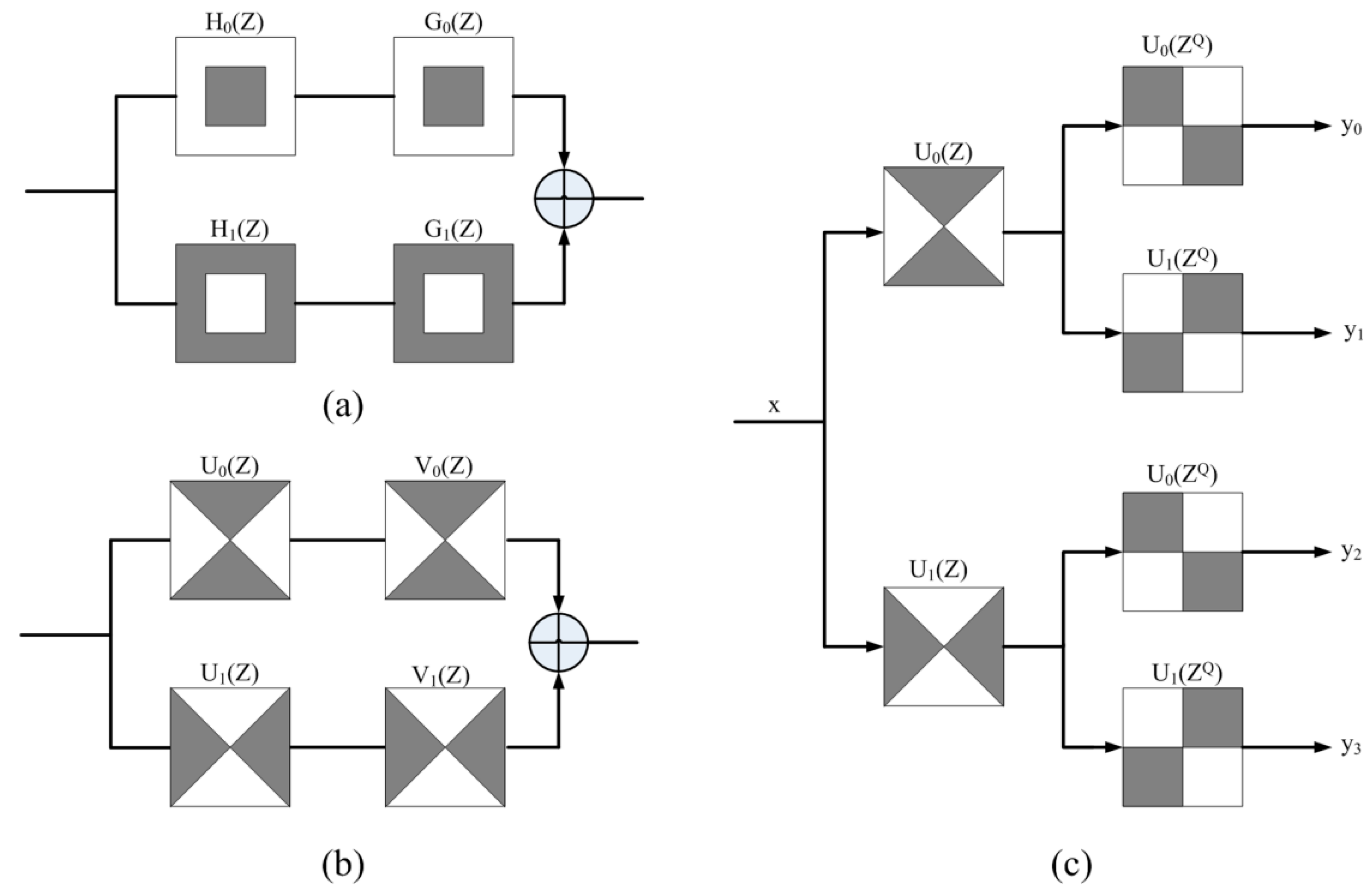
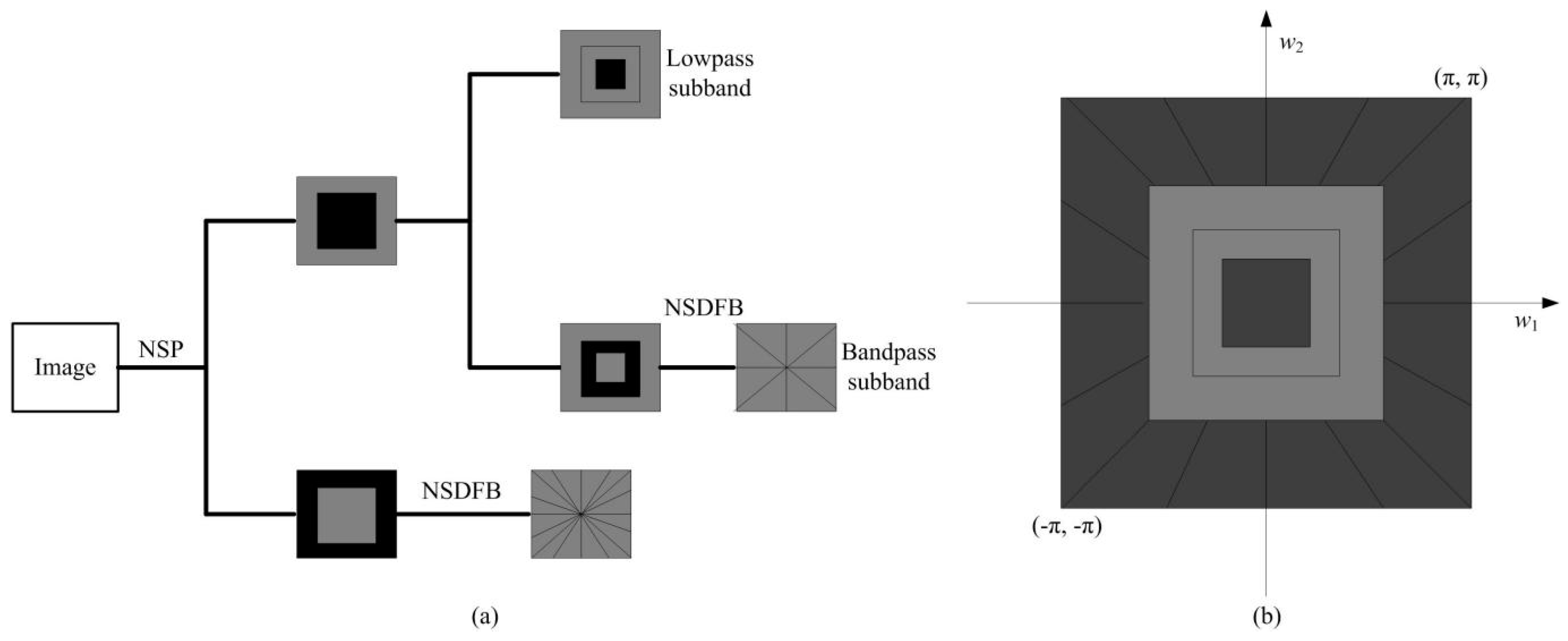
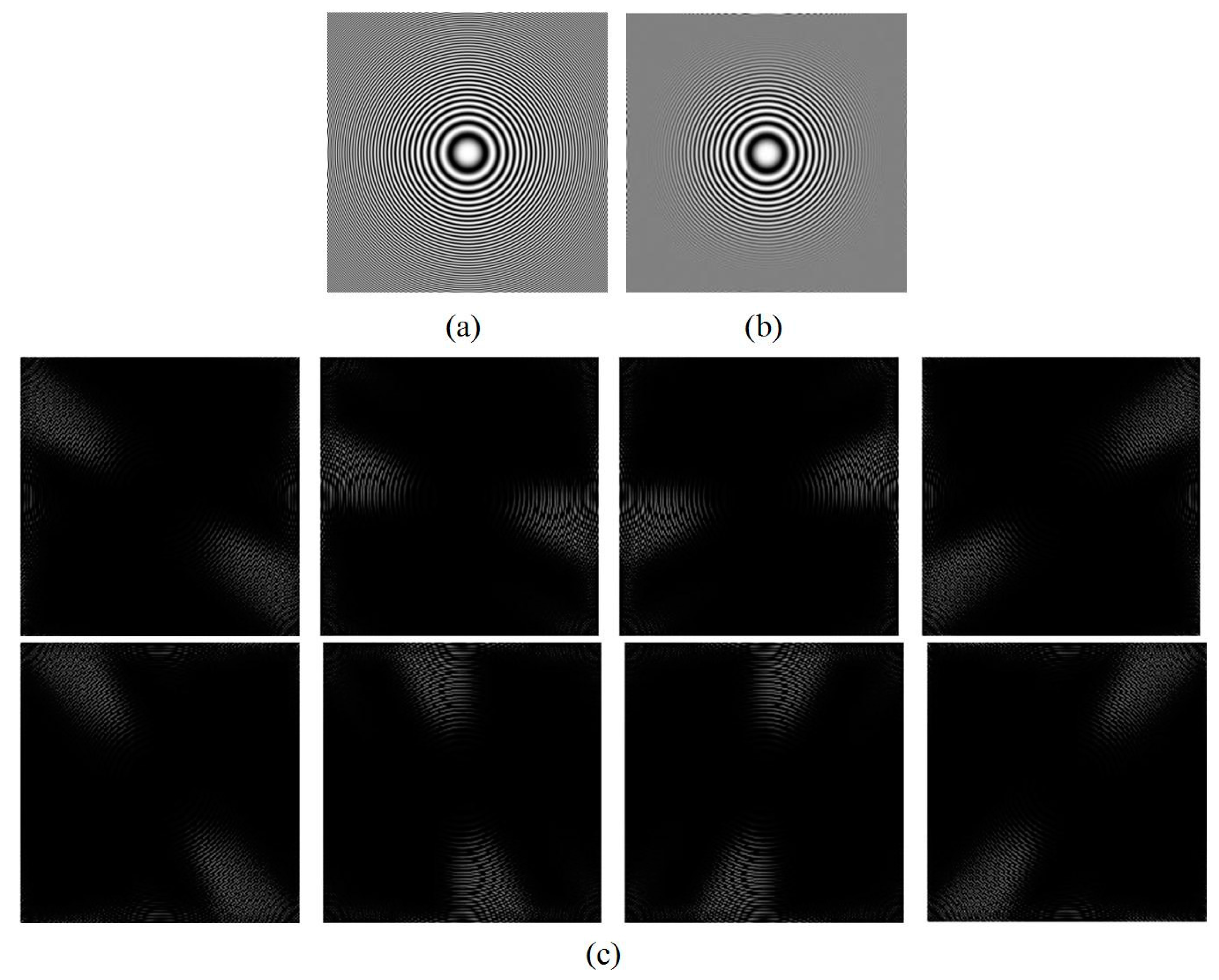
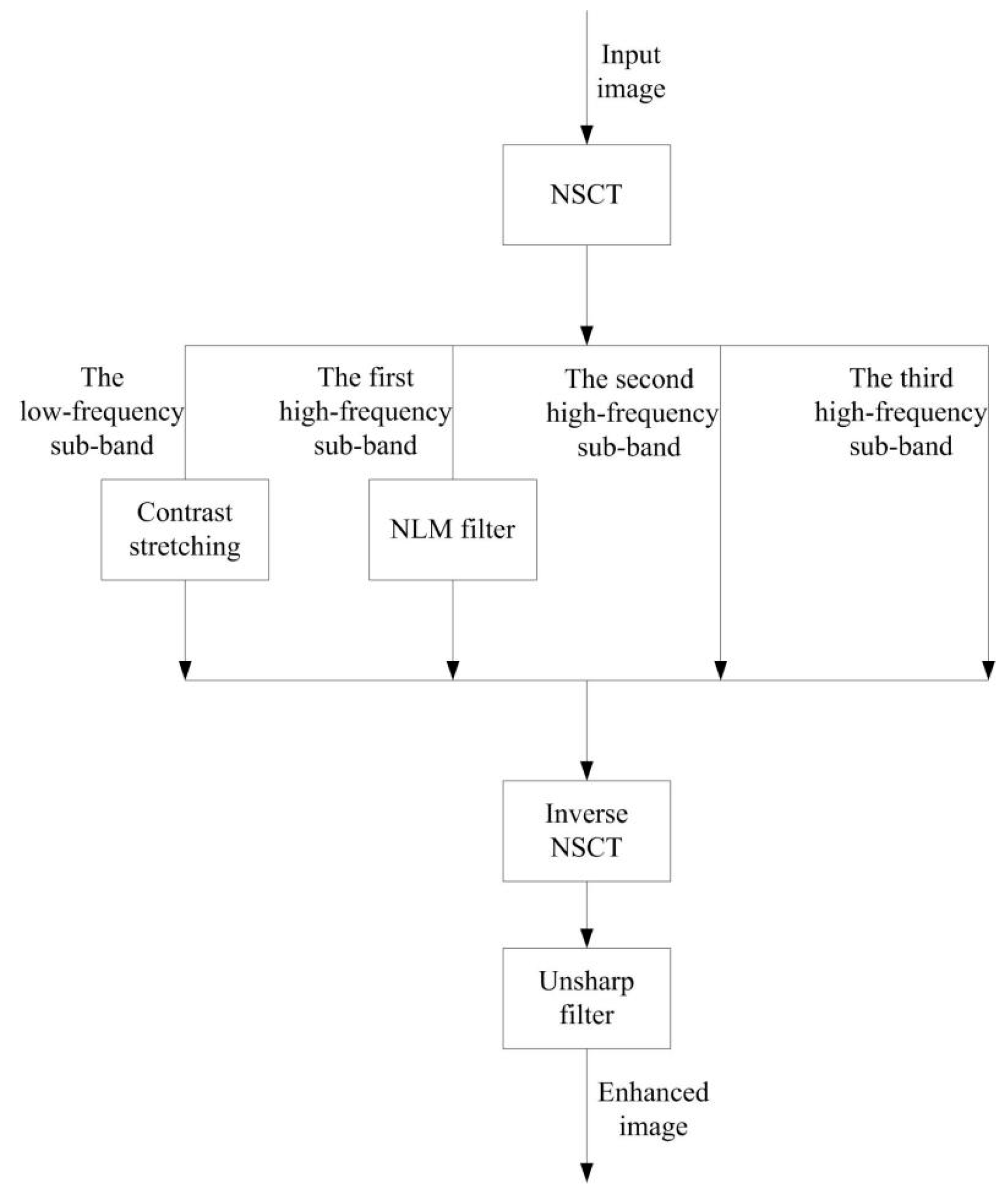
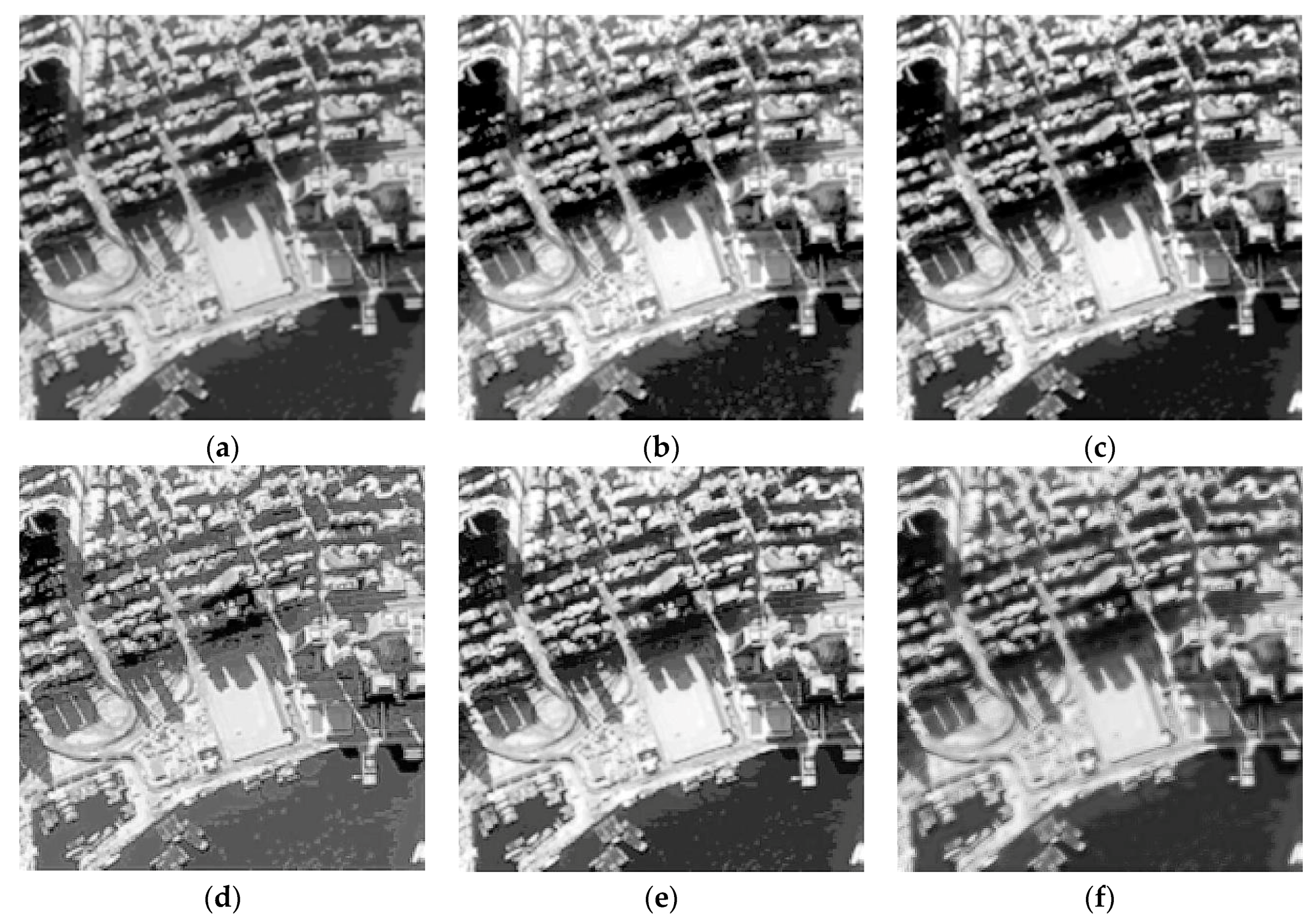
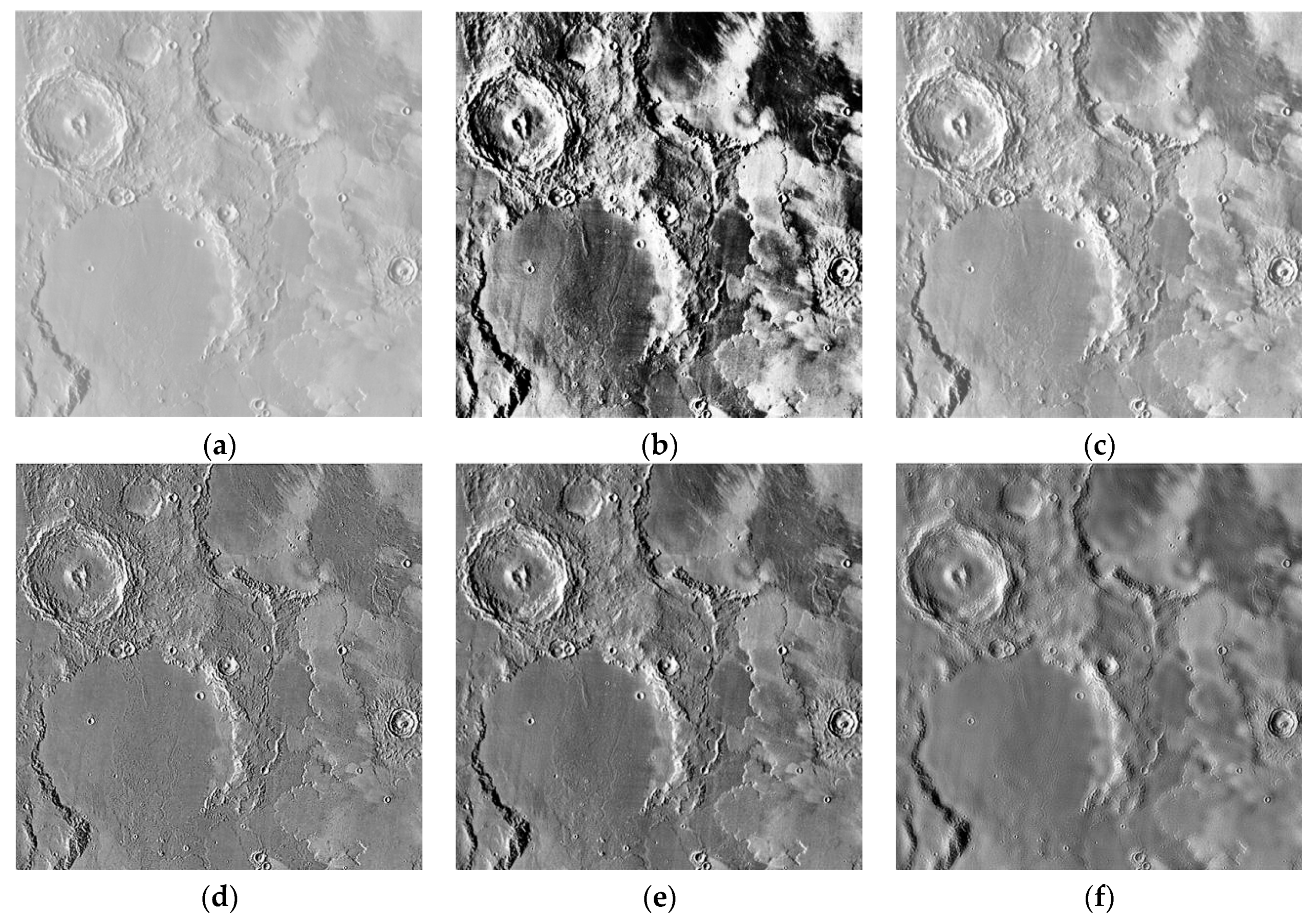

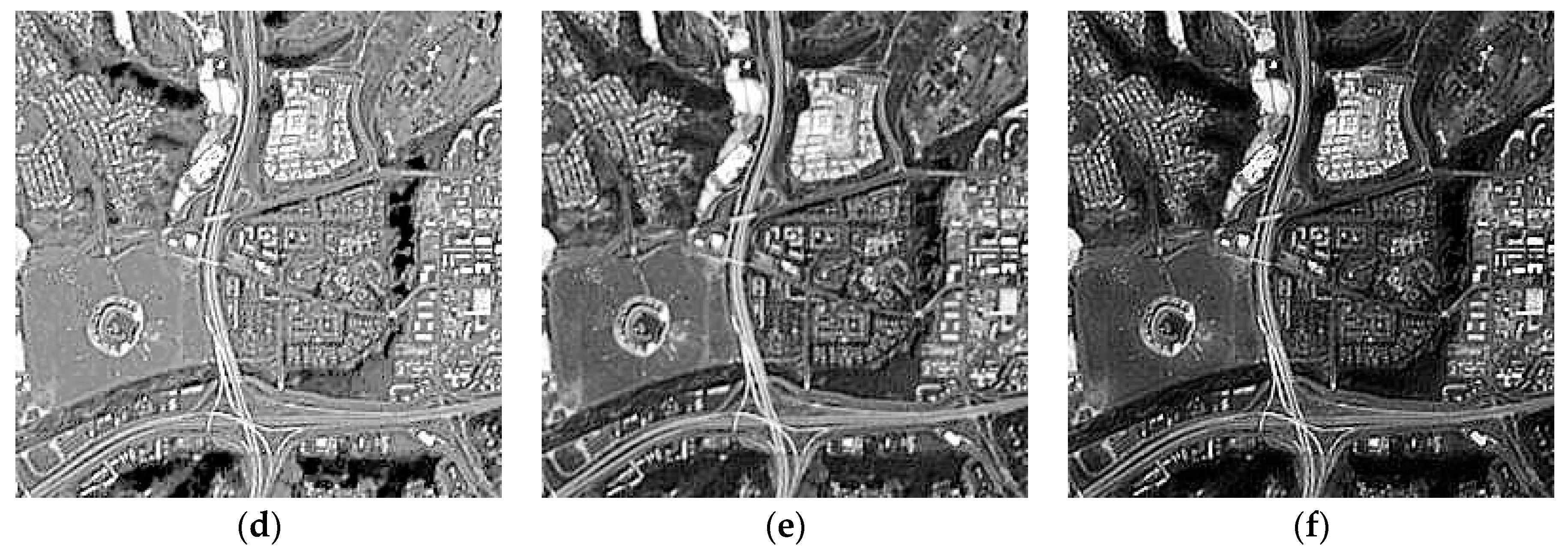
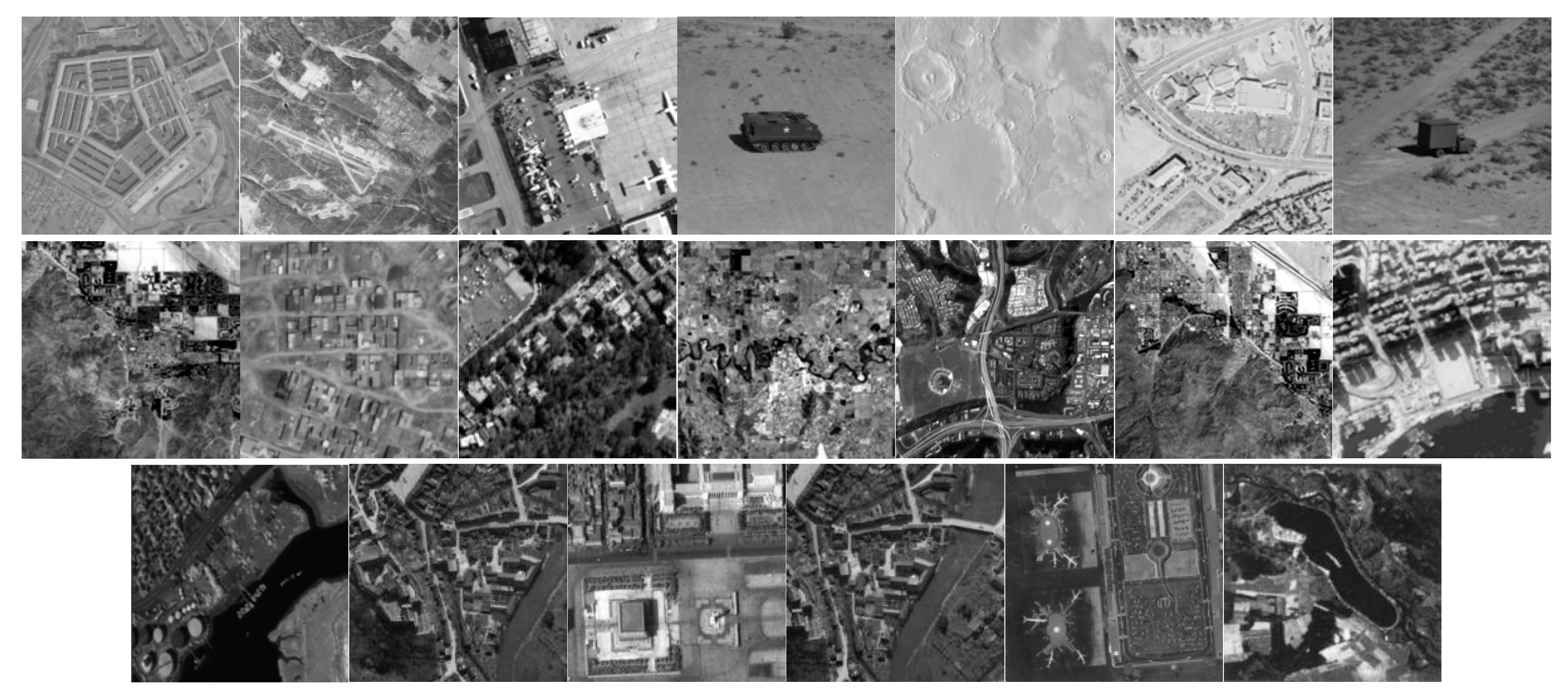
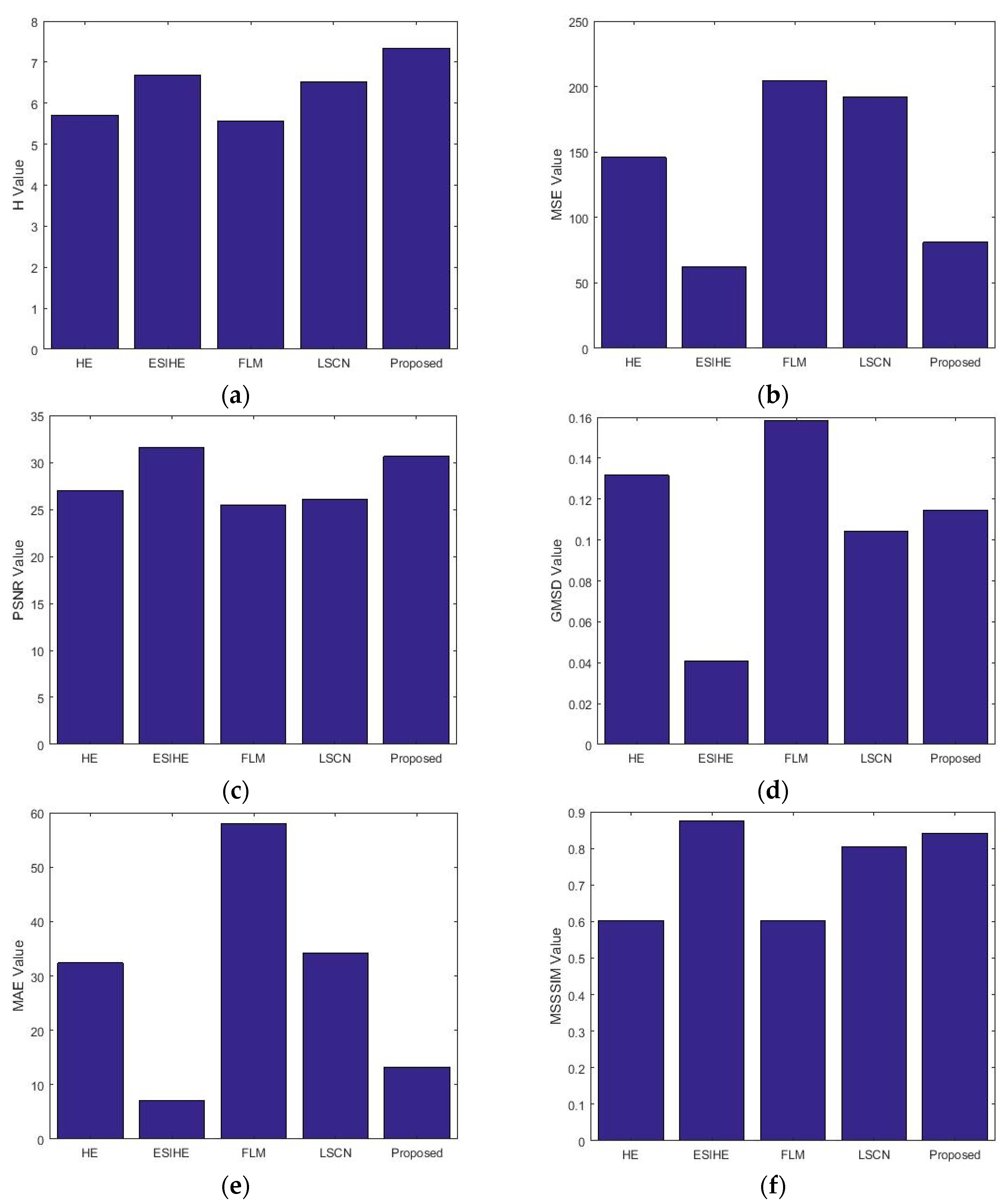
| HE | ESIHE | FLM | LSCN | Proposed | |
|---|---|---|---|---|---|
| H | 5.8139 | 7.3840 | 5.4117 | 6.9739 | 7.7279 |
| MSE | 109.5441 | 52.9798 | 157.0788 | 133.5418 | 61.4857 |
| PSNR | 27.7349 | 30.8897 | 26.1696 | 26.8746 | 30.2431 |
| GMSD | 0.0916 | 0.0220 | 0.1275 | 0.0653 | 0.0831 |
| MAE | 9.0398 | 4.4681 | 22.2944 | 13.1778 | 7.5462 |
| MSSSIM | 0.9433 | 0.9604 | 0.8789 | 0.9546 | 0.9560 |
| HE | ESIHE | FLM | LSCN | Proposed | |
|---|---|---|---|---|---|
| H | 5.3680 | 5.7781 | 4.7970 | 6.2201 | 6.9939 |
| MSE | 55.3809 | 23.1740 | 10.9848 | 2.9688 | 0.9760 |
| PSNR | 30.6972 | 34.4808 | 37.7229 | 43.4050 | 48.2362 |
| GMSD | 0.2172 | 0.0929 | 0.1680 | 0.1257 | 0.1161 |
| MAE | 6.4192 | 2.1371 | 1.3861 | 0.2497 | 0.0923 |
| MSSSIM | 0.1495 | 0.6382 | 0.6634 | 0.5354 | 0.6043 |
| HE | ESIHE | FLM | LSCN | Proposed | |
|---|---|---|---|---|---|
| H | 5.9682 | 7.3231 | 5.7467 | 7.1225 | 7.4585 |
| MSE | 186.9627 | 36.1431 | 226.8316 | 186.8378 | 49.5929 |
| PSNR | 25.4133 | 32.5506 | 24.5738 | 25.4162 | 31.1766 |
| GMSD | 0.1136 | 0.0074 | 0.1655 | 0.1058 | 0.1070 |
| MAE | 43.4997 | 4.1402 | 56.8070 | 24.3111 | 6.4677 |
| MSSSIM | 0.6896 | 0.9869 | 0.6189 | 0.9034 | 0.9269 |
| HE | ESIHE | FLM | LSCN | Proposed | |
|---|---|---|---|---|---|
| H | 5.7086 | 6.6722 | 5.5638 | 6.5150 | 7.3452 |
| MSE | 145.9162 | 62.2076 | 204.3192 | 192.4159 | 81.1120 |
| PSNR | 27.0276 | 31.6272 | 25.5021 | 26.0704 | 30.6440 |
| GMSD | 0.1317 | 0.0407 | 0.1586 | 0.1041 | 0.1145 |
| MAE | 32.3724 | 7.1230 | 58.0083 | 34.2755 | 13.2823 |
| MSSSIM | 0.6031 | 0.8760 | 0.6018 | 0.8037 | 0.8415 |
© 2017 by the authors. Licensee MDPI, Basel, Switzerland. This article is an open access article distributed under the terms and conditions of the Creative Commons Attribution (CC BY) license (http://creativecommons.org/licenses/by/4.0/).
Share and Cite
Li, L.; Si, Y.; Jia, Z. Remote Sensing Image Enhancement Based on Non-Local Means Filter in NSCT Domain. Algorithms 2017, 10, 116. https://doi.org/10.3390/a10040116
Li L, Si Y, Jia Z. Remote Sensing Image Enhancement Based on Non-Local Means Filter in NSCT Domain. Algorithms. 2017; 10(4):116. https://doi.org/10.3390/a10040116
Chicago/Turabian StyleLi, Liangliang, Yujuan Si, and Zhenhong Jia. 2017. "Remote Sensing Image Enhancement Based on Non-Local Means Filter in NSCT Domain" Algorithms 10, no. 4: 116. https://doi.org/10.3390/a10040116




